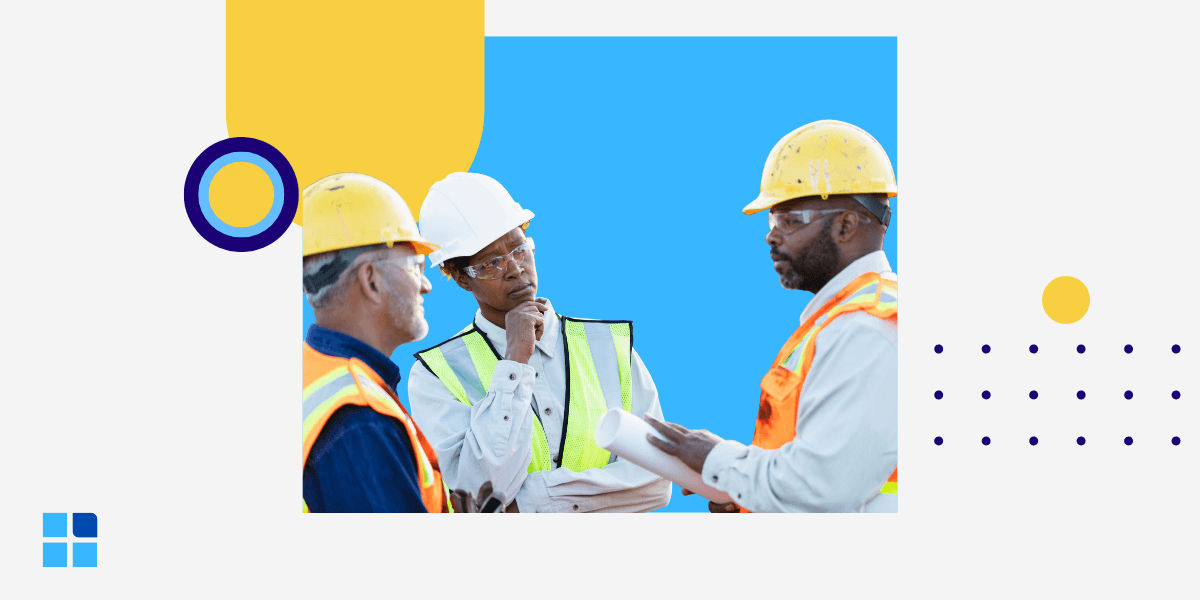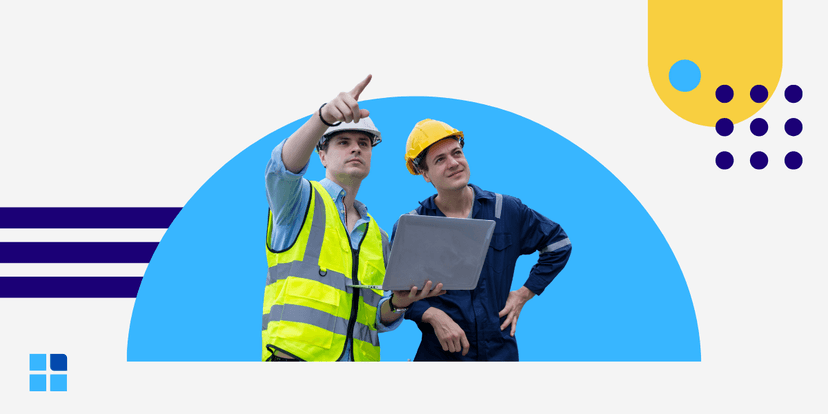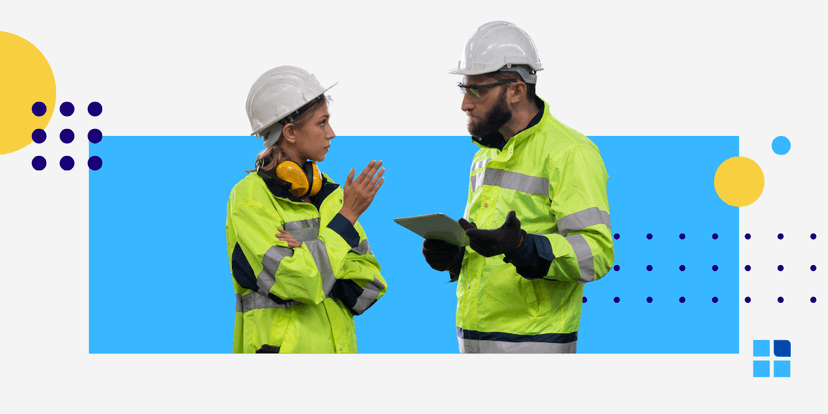Take a quick look around your workspace. Is it a model of efficiency, or is it a landscape of clutter, with tools, paperwork, and raw materials scattered about? For many businesses, disorganized work areas lead to wasted time, frustration, and hidden costs. The constant hunt for a specific tool or document kills momentum and drains energy. The solution to this universal problem is a powerful, systematic approach to workplace organization known as 5S.
5S represents more than just a cleanup project; it’s a foundational pillar of lean manufacturing and the Toyota Production System, and its principles are a key component of operational excellence. Implementing 5S is often the first step an organization takes on its journey toward continuous improvement.
This guide will provide a deep dive into the 5S methodology, breaking down each of its core elements. We will explore how organizations can improve efficiency, reduce waste, and create a safer, more productive work environment by embracing 5S.
The core idea behind the 5S methodology
So, what exactly is this powerful 5S system? At its heart, the methodology is a systematic approach to organizing a workspace for maximum efficiency and effectiveness. The Toyota Motor Company originated this system as a key element of the world-renowned Toyota Production System. Its success has led to its adoption by industries worldwide, far beyond the automotive sector.

The name 5S comes from five Japanese words, each representing a step in the process:
- Seiri (Sort)
- Seiton (Set in Order)
- Seiso (Shine)
- Seiketsu (Standardize), and
- Shitsuke (Sustain)
These steps provide a clear framework for eliminating waste and establishing a visual workplace.
When organizations implement the 5S framework, they create a culture of discipline and order. This isn't just about a one-time tidying event; it’s about establishing a new standard for how the work environment is managed. The ultimate goal of 5S is to create a workplace where problems are immediately visible and solutions can be implemented quickly. Every part of the 5S system is designed to support this goal.
The first pillar: Seiri or Sort
The very first step in the 5S journey is Seiri, which translates to "Sort." This phase is all about aggressively decluttering the workspace. The goal is for teams to go through every single item in the work area (for e.g., tools, materials, equipment, paperwork) and decide what is truly necessary to perform the required tasks. The 5S process must begin with a ruthless Sort.
During the Sort phase, teams critically evaluate everything and remove all unnecessary items. A popular method teams use is "red-tagging," where they mark any item of questionable value with a red tag. They then move these items to a holding area. If, after a certain period, no one has used the item, it’s a clear sign that it can be disposed of, recycled, or relocated. This is a core practice of the 5S Sort.
Practical tips for sorting:
- Work in teams: Sorting is more effective when done with the people who actually use the space.
- Ask the right questions: For each item, ask: Is this needed for this job? How often is it used? Does it belong here?
- Establish a "red tag area": Create a designated, visible space for items that are being evaluated. This makes the 5S process transparent.
This part of the 5S system is critical because it immediately frees up valuable space and reduces clutter. It tackles the common problem of hoarding old equipment, excess raw materials, and broken tools. Sorting is a foundational step that makes all the subsequent steps much easier. A proper 5S Sort clears the way for true organization.
The second pillar: Seiton or Set in Order
Once you have removed all the clutter, the next stage of 5S is Seiton, or "Set in Order." This principle is famously summarized by the phrase, "A place for everything, and everything in its place." This phase of 5S focuses on intelligent organization.
During this phase, teams thoughtfully design a logical layout for all the remaining items. The goal is to make workflows smooth and intuitive. A key part of Seiton involves using visual cues like shadow boards, labeled cabinets, and colour-coded floor markings. This makes it instantly obvious where things belong and, more importantly, when something is missing. By implementing this stage of 5S, you drastically cut down on time spent searching for items.
Practical tips for setting in order:
- Prioritize by frequency: Place the most frequently used tools and items closest to the point of use.
- Use visual aids: Label everything clearly. Use outlines on walls or in drawers (shadow boards) so anyone can see where tools go. This is a key element of the 5S visual workplace.
- Make it ergonomic: Arrange items to minimize bending, reaching, and unnecessary motion. The 5S system should always support the worker.
This step not only helps boost productivity but also reduces operator frustration, which in turn improves employee morale. This part of the 5S framework is all about ergonomic and efficient placement.
The third pillar: Seiso or Shine
The third pillar of 5S is Seiso, which means "Shine." This step involves a thorough cleaning of the workspace, but its purpose goes much deeper than simple aesthetics. A clean workplace is a fundamental principle of the 5S philosophy.
In the methodology, the act of cleaning is also an act of inspection. As employees clean their equipment, machinery, and work areas, they have a unique opportunity to spot potential problems. For instance, a small oil leak, a frayed wire, or a loose bolt might go unnoticed during production processes. However, these issues become immediately apparent during a detailed cleaning.
Practical tips for shining:
- Integrate into daily work: Shine shouldn't be a once-a-month event. Incorporate 5-10 minutes of cleaning and inspection at the end of every shift.
- Create cleaning stations: Provide easily accessible cleaning supplies. This removes barriers to keeping the 5S Shine standard.
- Develop checklists: Create simple, visual checklists for each area to ensure all inspection points are covered during the Shine process.
This proactive maintenance is a huge benefit of the 5S system. It helps identify and fix small problems before they can escalate into major breakdowns that could shut down production lines. The Shine step ensures that the workplace is not only clean but also in a constant state of readiness. Regular adherence to this 5S principle is vital.
The fourth pillar: Seiketsu or Standardize
After sorting, organizing, and cleaning, the fourth step of 5S, Seiketsu or "Standardize," comes into play. The goal of this phase is to develop a consistent system to maintain the first three pillars. Without standardization, the workplace will inevitably slide back into its old, disorganized state. This step is what makes 5S a truly robust system.
This is where teams create clear rules, checklists, and procedures for their workplace organization. This is a critical part of visual management.
Practical tips for standardizing:
- Use visual standards: Take photos of how a perfectly organized and clean workstation should look. Post these images in the area as a clear reference. This is a powerful 5S tool.
- Create clear procedures: Document the tasks for sorting, organizing, and cleaning. Define roles and responsibilities so everyone knows what is expected.
- Integrate into work instructions: Weave the 5S standards directly into standard operating procedures for various tasks.
Standardization is the key element that turns 5S from a one-time project into a sustainable practice. It creates accountability and ensures that everyone understands their responsibilities in upholding the standards. When organizations implement this stage correctly, the new, efficient state becomes the new normal. The 5S methodology relies on this consistency.
The fifth pillar: Shitsuke or Sustain
The final and often most challenging pillar of 5S is Shitsuke, which translates to "Sustain." This step is all about discipline and commitment. In other words, it is about turning the 5S principles into long-term habits and embedding them into the company culture. Without Sustain, all the benefits of your efforts will be lost.
Sustain involves ongoing training, communication, and leadership support. The goal is to maintain organization not through force, but through a shared understanding of the benefits.
Practical tips for sustaining:
- Leadership walk-throughs: When managers regularly walk the floor and show interest in the 5S program, it signals its importance.
- Regular audits: Use a simple scoring system to regularly audit different areas. This provides feedback and can create friendly competition.
- Communicate successes: Share before-and-after photos, productivity improvements, and cost savings that resulted from the 5S program.
This is the pillar that ensures the long-term success of any 5S implementation. It represents the commitment to continuous improvement and is a true test of an organization's discipline. A successful 5S program never truly ends; it becomes part of the daily routine. This is the ultimate goal of 5S.
5S beyond the manufacturing floor
While the 5S methodology was born on the manufacturing floor, its principles are universal. A major reason for the global success of this framework is its adaptability to virtually any working environment. Eliminating waste and improving workflow are goals shared by all industries worldwide.
Here are just a few examples of how teams can apply 5S in different settings:
- In the office:
- Sort: Get rid of old files, broken office equipment, and unnecessary stationery.
- Set in Order: Create a logical filing system (both physical and digital), organize desk drawers, and label common areas.
- Shine: Implement a "clean desk" policy and schedule regular clean-ups of shared spaces like storage closets.
- In healthcare:
- Sort: Remove expired medical supplies and obsolete equipment from patient rooms and supply closets.
- Set in Order: Organize crash carts and supply rooms with clear labels and outlines so that critical items can be found in seconds during an emergency. This application of 5S saves lives.
- In a digital workspace:
- Sort: Delete old, irrelevant files and emails. Archive completed projects.
- Set in Order: Use a standardized folder structure and file-naming convention. Organize your desktop icons and browser bookmarks. This "digital 5S" is crucial for modern productivity.
The powerful benefits of the 5S system
When organizations implement 5S, the positive impact is felt across the entire business. It's far more than just a housekeeping initiative; it's a powerful driver of operational excellence. The benefits are clear and measurable.

Here are some of the key advantages of implementing the 5S methodology:
- Improved safety: An organized, clean workspace is inherently a safer workspace. Removing clutter reduces tripping hazards, and the Shine step helps identify equipment issues before they cause accidents. The 5S system is a great foundation for any safety program.
- Increased productivity: By eliminating waste associated with searching for tools and materials, the system directly helps boost productivity.
- Higher quality: A clean and organized environment makes it easier to spot defects and errors in the production processes. This is a core benefit of a 5S implementation.
- Reduced costs: The 5S framework helps reduce waste in many forms, including wasted motion, waiting time, and excess inventory, which all have a direct impact on the bottom line.
- Enhanced employee morale: Employees naturally prefer working in a clean, organized, and efficient environment. This practice empowers them to take control of their workspace, leading to greater job satisfaction.
The 5S methodology provides a clear path to achieving these results. Every step of the system contributes to a more efficient and productive work environment.
Start your 5S transformation today
In conclusion, the 5S methodology is one of the most powerful and fundamental tools in the world of lean manufacturing. It provides a clear, step-by-step framework for creating a highly organized, efficient, and productive work environment. From the manufacturing floor to the office, the principles of 5S offer a roadmap for eliminating waste and fostering a culture of continuous improvement.
A key part of making your 5S system successful is creating clear, consistent documentation. To empower your teams and ensure a safer, more organized workplace, a tool like our Lean Creator can be invaluable. This versatile document creation tool is specifically designed to help you build professional 5S checklists and SOPs, making it easier than ever to standardize your new processes and sustain your gains.
The journey of 5S is transformative. It's more than just the five steps; it’s about embracing a new mindset focused on order, discipline, and excellence. When you fully commit to this framework, you are not just cleaning up a workspace, you are laying the foundation for a stronger, more competitive organization. This is the true power of 5S.







